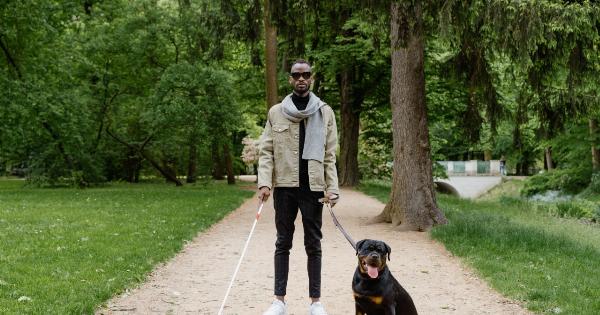Having a blind dog can present unique challenges when it comes to creating a safe and comfortable environment within your home. But fear not, with a little guidance and some modifications, you can help your furry friend navigate your home with ease.
In this article, we will provide you with 10 helpful tips to make your home blind-dog-friendly.
1. Clear the Clutter
Start by decluttering your home to create clear pathways for your blind dog to navigate easily. Remove any unnecessary furniture, toys, or objects that may obstruct their movement.
2. Use Rugs and Mats
Place rugs or mats down in different areas of your home to help your blind dog distinguish between different rooms. This can provide a tactile reference point and make it easier for them to navigate from one room to another.
3. Avoid Rearranging Furniture
Blind dogs rely on their memory of a space’s layout, so try to avoid rearranging furniture unless absolutely necessary. Consistency in the arrangement of your home will help your furry friend move around more comfortably.
4. Provide a Safe Haven
Designate a specific area in your home as a safe haven for your blind dog. Add their bed, water bowl, and some familiar toys to this space. This will give them a sense of security and an easily recognizable spot to retreat to.
5. Use Scent Markers
Using scented objects or markers can help your blind dog identify specific areas within your home. For example, you can place a scented mat near the backdoor or a particular room, making it easier for them to find their way.
6. Install Gates or Barriers
Install gates or barriers in areas you want your dog to avoid, such as stairs or rooms that may pose a risk. This will prevent them from accidentally wandering into potentially dangerous areas.
7. Consider Auditory Cues
Use sounds or auditory cues to help your blind dog navigate your home more easily. For instance, you can attach bells to doors or a wind chime near their favorite resting spot, creating an audible reference point.
8. Be Mindful of Changes in Elevation
Stairs, ramps, or changes in floor height can be tricky for a blind dog. Install ramps where necessary and ensure that any elevated platforms or areas are securely blocked off to prevent falls.
9. Employ Touch Training
Train your blind dog to respond to touch cues. For example, you can gently tap the floor next to their food bowl to let them know it’s mealtime. This can help them associate specific touch cues with different activities or areas of your home.
10. Be Patient and Provide Support
Lastly, be patient with your blind dog as they adjust to their new environment. Offer them support and reassurance during this transition period, providing lots of praise and positive reinforcement when they navigate successfully.






























